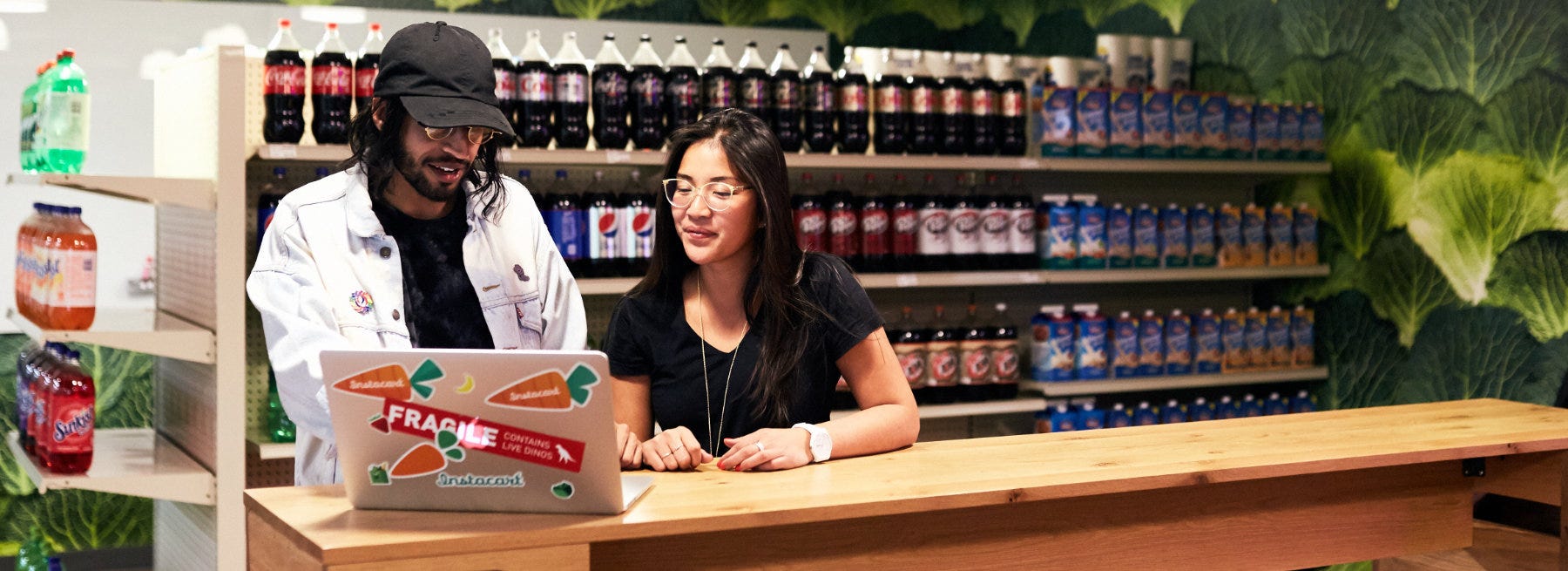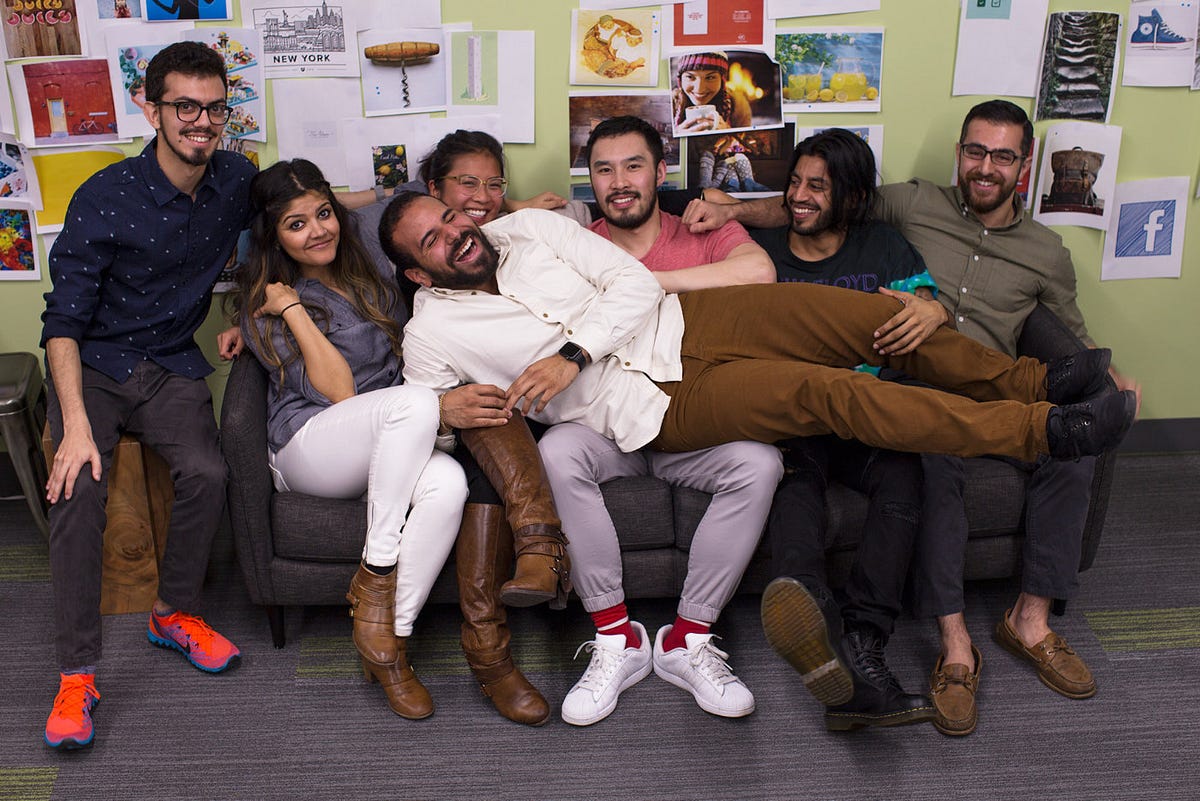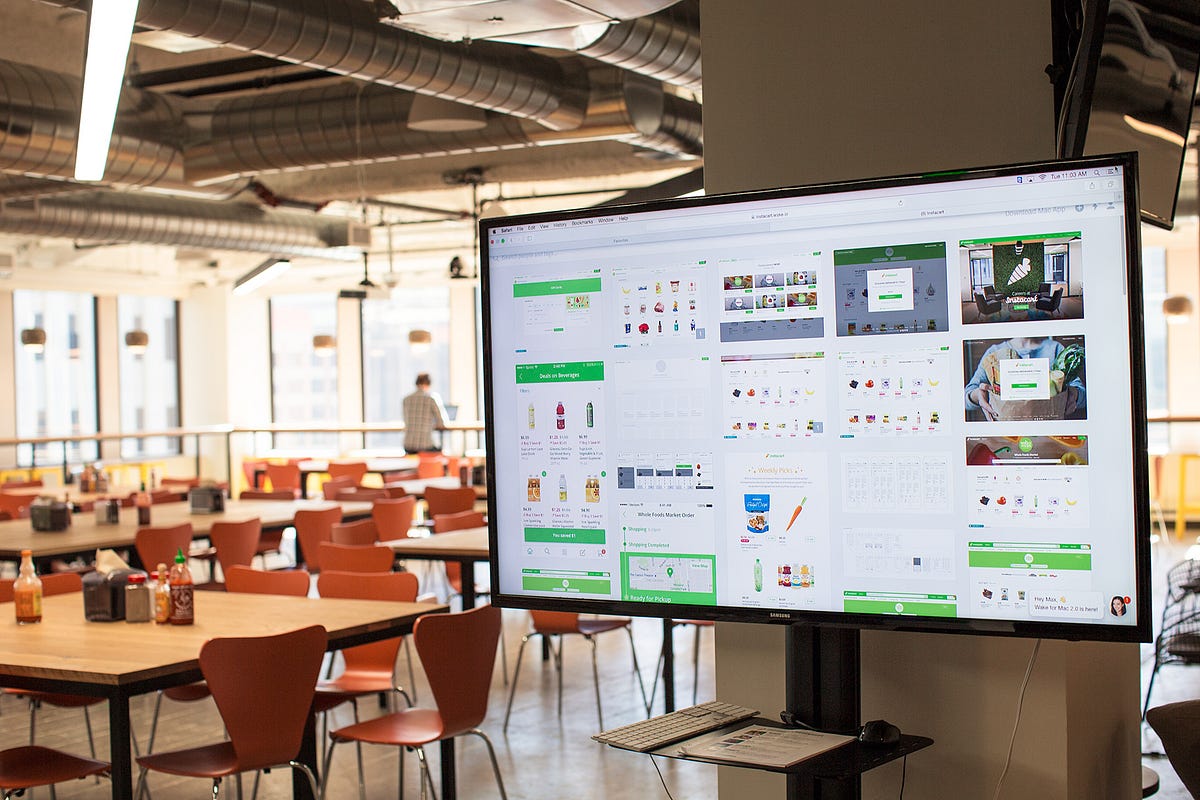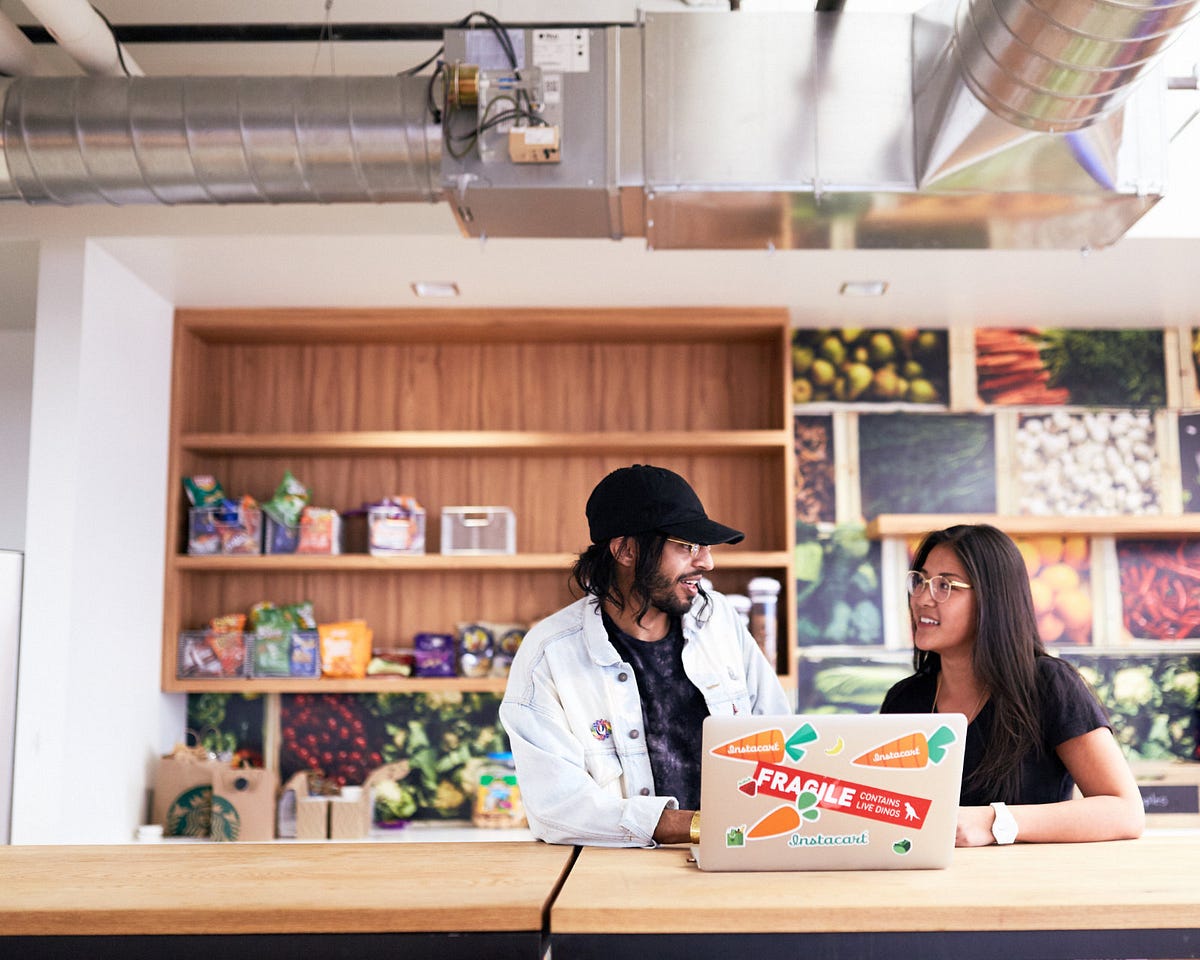How Instacart Approaches Design, Collaboration, and Work/Life Balance — In Progress — Medium
Save article ToRead Archive Delete · Log in Log out
11 min read · View original · medium.com/in-progress


How Instacart Approaches Design, Collaboration, and Work/Life Balance
A Conversation with Zain Ali, Designer
You’ve probably heard of Instacart, the online grocery delivery service currently operating in nineteen states. The service is simple — you order groceries online, Instacart’s shoppers will pick them up from the market, and deliver them to your door whenever scheduled. Fortune magazine recently reported that, contrary to the expectations of many pundits, the company is now gross margin positive.
We spoke to Zain Ali, one of Instacart’s earliest design hires, about life at the company, the role of design ownership, and the importance of having hobbies outside of design.


How did you get started with Instacart?
I was working at Sincerely, where I’d been for a couple of years, and we were getting acquired by ProFlowers. But I kind of wanted that next, new kind of move. So I was talking to my mentor David Hua and told him that I wanted to be part of something that was going to be big. I wanted to jump on a rocket ship.
At the time, Instacart was only 9 employees, and Hua introduced me to Max, one of Instacart’s cofounders. I had a conversation with him, and we clicked right off the bat. They didn’t have a full-time designer yet. I wanted a challenge, and it worked out. That’s how it got started. That was almost two-and-a-half years ago and it’s been the most invaluable experience I’ve had in my life.
How does design fit in with Instacart’s culture?
Instacart has a lot of engineers — approximately 70 — and six designers. It’s an interesting ecosystem because we have a lot of different products at Instacart.
People don’t realize that we have so much going on behind the scenes. In addition to our consumer app, we have apps used by shoppers — the people who are fulfilling orders in stores like Whole Foods, Costco, and Safeway. We also have products that our partners — the stores — can use to manage their inventory, sales, and availability. So we have a designer for each individual product.
All of our designers are really adept at doing UX and UI, full-stack, and they ship products with really great engineers. It enables us to operate like a small team, but have a huge impact. Everyone has a ton of ownership, and that’s how design has its footprint in the organization.
Right now we’re hiring a design director, and we’re really building our team up. There are so many different areas that need our attention, we need that direction and focus.


How does the team collaborate?
We use all different types of software, like everyone else does. Sketch. Obviously we use Wake! Trello. RedPen. And we use Slack to communicate.
Since our design team is focused on different products, we have to share knowledge, findings and we have to share designs to maintain consistency.
“Everyone’s dealing with different problems, and they’re going to wind up with different solutions.”
We meet up once a week for critique sessions, we do weekly stand-ups, and we try to really stay synced and figure out how we can make sure there’s cohesion across our different products. Everyone’s working on different problems, and everyone has different styles, but we have to maintain that cohesion across everything. At the same time, we don’t want to stifle innovation. Everyone’s dealing with different problems, and they’re going to wind up with different solutions.
The software helps a lot, the crit sessions help a lot, and we’re only getting better. Also, the design team is quite new. Last January, we hired our third designer, and over the course of the last year we hired three more. That was one of our growing pains, and we’re finally understanding how we work together and how we can maintain a holistic goal for design in the org. Everyone’s gunning forward on this one design feeling and experience.
How has Wake changed the way you work?
It’s been super helpful. We’d been looking at a lot of different solutions, and Wake really opened the door to design for the rest of the organization.
We integrated Wake into Slack, and we have a public design Slack channel in addition to the private design channel. The public one is really interesting because anyone can be in there — we’ve left the door open and put that invite out there.
We took a giant TV and put it into our cafeteria where hundreds of people will see it everyday, and it has Wake on it. It has the Wake dashboard running on a Mac Mini, and people can scroll and check out what’s happening across the different products. That’s really awesome for us, especially since we’re a small team. Our designers are working with tons of people, but we can’t interface with everybody in the company at the same time. So it allows people to get that perspective and that helps us talk about design more and educate the rest of the organization about design. It’s really inviting. People can give us feedback, they can leave us comments, they can talk to us. Especially in the cafeteria, they can come and sit with us and talk to us about what we’re working on.


At the same time, like I’ve been saying, we all work on such different products every day, so having Wake in the design channel lets you see what someone else is doing. Even though you may be heads-down working on something, you can see that Himani or Jordan or Kim has uploaded a design. Damon just solved this crazy design problem. You get inspired, you get juiced up. It’s like: “Yeah, they’re doing really great work, so now I’ve got to do amazing work on the same frequency. I want to do better stuff.” It gets that energy and synergy going.
What’s something that your team does differently than other design teams?
I think it has to do with how full-stack everyone is. We really pride ourselves on ownership in Instacart throughout the entire organization — it doesn’t just stop at designers and engineers.
“I think when you give people that trust they really run with it and they’ll really show you what they’re capable of and that they can really solve difficult problems. We set high goals, and we actually reach them faster than we think we can.”
I don’t want to sound like a broken record, but everyone is working on such different problems. We have the ecommerce side, which is the consumer product team, and then we have the shopper app, which is on Android and iPhone, and there’s a web component to that. We have to onboard shoppers and have a whole application process for them to go through with a background check and all that stuff. We have these products that Whole Foods and other stores can use to manage their inventory with millions of products, and manage sales on all of those items across different stores and different regions. It’s this crazy complex thing. It’s a difficult thing to do solo a lot of times. We have one designer who just does shopper stuff, one designer who’s just working on consumer product stuff, one designer working on growth. It’s a lot of responsibility and a lot of ownership, and I think when you give people that trust they really run with it and they’ll really show you what they’re capable of and that they can really solve difficult problems. We set high goals, and we actually reach them faster than we think we can.


What’s a piece of traditional design wisdom that you disagree with?
I’ve been out here for ten years. I was here when designers weren’t wanted. You weren’t going to get paid much. It wasn’t all about product design. That was when the iPhone had just come out. And now we live in a place where there are designers who haven’t even been designing for a year, and they’re writing blog posts and giving out wisdom for free. And that’s cool — I really like that people are trying to educate and elevate the community, but at the same time I think a lot of designers get caught up in that world. They get caught up in the industry of UI design, and then they only stay in UI design. They read these blog posts about UI design, and they confine themselves and constrain themselves to only understanding this one perspective. You forget that there’s this whole other world out there that you need to be designing for.
“They read these blog posts about UI design, and they confine themselves and constrain themselves to only understanding this one perspective. You forget that there’s this whole other world out there that you need to be designing for.”
Designing for a phone that’s 640 by 1136 or whatever, and creating a flow of screens, you can forget that this phone can go anywhere in the world. It can go all over, and it has to work in all these different places. That’s really interesting. That’s why I try to get our team to really push our hobbies, the things we’re really interested in, and bring those into Instacart and build them up. Bring those other backgrounds here and let your cool ideas come to fruition. Allow them to blossom. That really inspires people to do better work in other areas, too. Not just UI, but with team-design and crit session design and everything else.
What’s something non-design related that you’ve brought into your design work?
I went to school for music production while I was working at Sincerely. They allowed me to take classes, so I’d take a Friday half-day at work and then go and learn about music production.
I believe if you’re producing music, you’re designing sound. Designing vibrations. That was an interesting thing that came into my arsenal of skills — shedding light on how to manipulate sounds and how song construction and sound theory work.
Sound design is really interesting to me. There are so many parts to music production. Even capturing audio itself is difficult, and I think those skills feed back into my design style. When I design, or make a product video for Instacart, now I know I can produce a song for it. I don’t have to go and find a royalty-free soundtrack that’s wack. We can make something where we created the whole thing. We didn’t go and outsource the stock photography, because we can take the photo. We didn’t go and outsource the music, because we can make the music.
I think that has changed my perspective about design, and creation in general. It’s all these experiences combined that make design what it is.
It’s similar to how print design isn’t just about layout. It’s about the paper and the feeling, legibility, and the line length. It’s the kerning and the leading and all of it. How the ink is pressed onto the paper. There’s so much more that’s part of the experience, and it involves being tactile — to get feedback and understand the texture of the paper.
Music and sound have really changed my design. Understanding how sound production works has been invaluable. It changes the way I look at movies and TV shows, too, and going to concerts and understanding how the lighting works with the sound. It’s a whole experience. You know, there was a guy who created the AIM sound. Or “You’ve got mail!” Or the ICQ sound. All these different things that people have created in the past began opening my eyes to this whole other facet of the end user experience.
I’m kind of ranting now, but that’s what sound did to me — it changed how I started looking at everything. It has even led to me working with some of my biggest idols in music. Music is a beautiful thing, it’s inspiring and invigorating.


Thanks to Zain Ali for sharing his insights about design and collaboration. You can follow him on Twitter, and see what he and the Instacart team have been building at instacart.com.
Pictures were taken by Arturo Torres. The designer in the pictures with Zain is Kim Ho.
To change the way your team collaborates, check out Wake — a private space to share and discuss design work with your team.